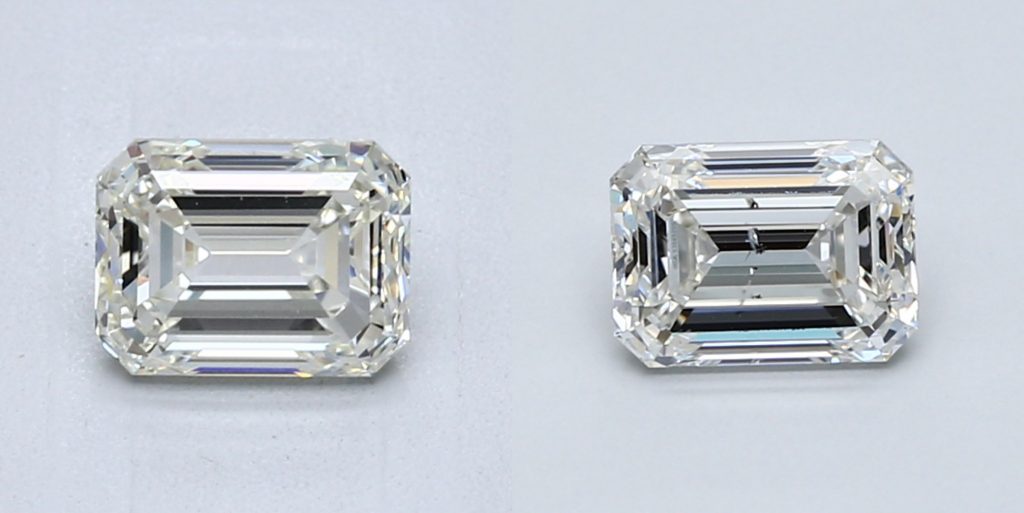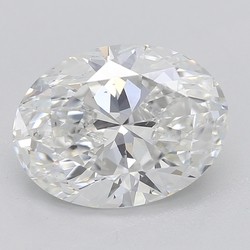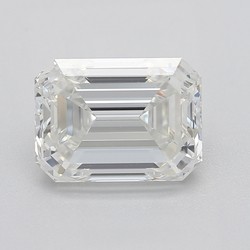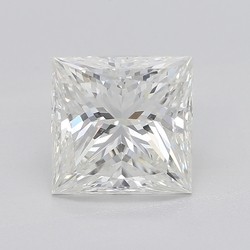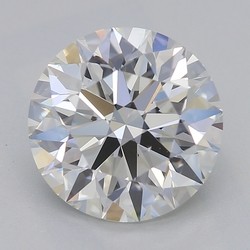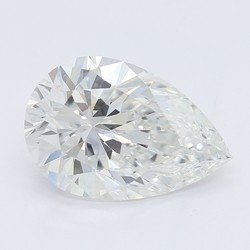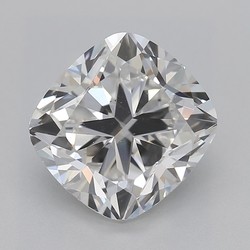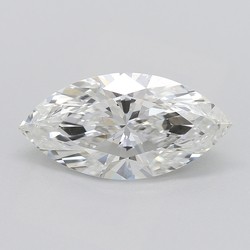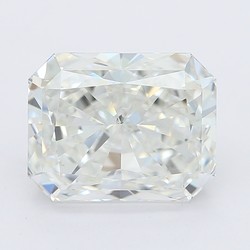What is an Inclusion in a Diamond, and Which Ones Should You Avoid?
Key Takeaways
- It is important to understand that, when looking for the right engagement ring, you will not find a diamond that is literally perfect.
- Inclusions within diamonds are an entirely normal thing, and most of them will only be viewable through a magnification of 10x.
- These inclusions will then be graded based on the location, the type, and the size of the inclusion itself.
- There are many different types including pinpoint, crystal, diamond feather and diamond cavities.
- In extreme cases they can cause a lack of sparkle or a cloudiness, but they won’t impact light performance if the diamond in question is considered eye clean.
- It is always possible to find a diamond which is not impacted by the flaws.
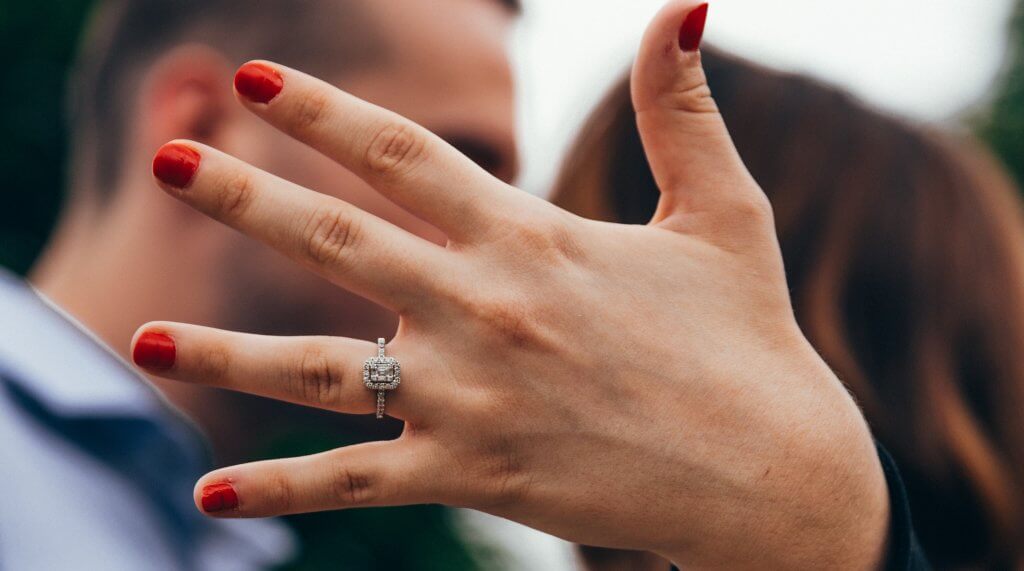
When you start to learn about inclusions, you quickly come round to the idea that ‘the perfect diamond ring’ that everyone keeps referring to is something of a misnomer – and that, in actual fact, finding the diamond engagement ring of her dreams means finding a diamond that is technically pretty far from perfect. After all, not coming round to that idea means you’ll find yourself scouring the global diamond market for something that’s about as rare as it is expensive.
So, whether you come to think of inclusions as freckles, scars, birthmarks or simply another beautiful part of the diamond’s character and appeal, the fact of the matter is you’re going to get used to talking about them pretty fast.
That’s not to say, however, that you’ve got to get used to looking at them, or to the idea of seeing them in your own diamond.
- The Basics
- Do All Diamonds Have Inclusions?
- How Diamond Inclusions are Graded
- The Clarity Inclusion Scale
- What Does an Inclusion Look Like?
- What is a Blemish on a Diamond?
- What’s the Difference Between a Flawless and an Internally Flawless Diamond?
- The Types of Inclusion
- Pinpoint Inclusions
- Crystal Inclusions
- Diamond Feather Inclusions
- Diamond Cavities
- What You Need to Know
- Do Inclusions Affect a Diamond’s Sparkle?
- Can Inclusions Cause Cloudiness in a Diamond?
- Which Diamond Inclusion is a Dealbreaker?
- Is a Slightly Included Diamond Bad?
- What is Considered an Eye Clean Diamond?
- Our Summary
The Basics
In all likelihood, you’ve come across plenty of pictures of sparkling diamonds, but none featuring any obvious flaws or imperfections that would turn you away from buying. So, here’s what we mean when we talk about the value-decreasing inclusions found in so many diamonds.
What does a Diamond Inclusion Mean?
A diamond inclusion is a small imperfection inside a diamond that was created due to the extreme pressure and heat from when it was formed.
The formation of these inclusions creates a totally unique pattern within the diamond, a little like the way no two people share exactly the same birthmark. There are many different types of inclusion which, under magnification or, in some cases, to the naked eye, look totally different from one another (but more on that below).
Nevertheless, most inclusions can only be seen under magnification of 10x, so they are unnoticeable to you or anyone who is just casually admiring the stone. Diamonds with a large number of inclusions have a lower clarity grade – particularly if those inclusions are visible to the naked eye.
Is it Normal For Diamonds to Have Inclusions?
Yes, totally normal – and not necessarily a problem for you.
We’ll go into this in much more detail below but, for now, suffice to say that it’s far, far more ‘normal’ for diamonds to have inclusions than it is for diamonds not to have inclusions.
Do All Diamonds Have Inclusions?
Not quite. While almost every diamond in existence has inclusions, although some have been verified as flawless.
Inclusions represent a near-inevitable part of a diamond’s journey from the extreme conditions deep underground, to the perfectly polished rings we present to our future brides. Pure, natural diamonds containing no inclusions are so rare, that most jewelers will never come across one.
For that reason, totally flawless diamonds are almost impossible to come by, and only the most dedicated collectors will even dream of tracking one down. So, when we say how important it is for you to ‘find the perfect diamond’, literal perfection is definitely far from what we really mean.
Do Diamond Inclusions Get Worse?
In most cases, no, minor inclusions will remain the same no matter how much the diamond is worn. Major inclusions – particularly those close to the girdle (the diamond’s widest point) can create a weak spot within the diamond, and make it more vulnerable to breaking.
Again, on the proviso that you pick out an eye clean diamond, the inclusions will be inconsequential for the stone’s durability, and you won’t need to worry about waking up one morning to find that what was an imperceptible pinpoint within your diamond has somehow ‘grown’ into a big, dark cloud under the surface.
How Diamond Inclusions are Graded
Gem lab such as the GIA have strict guidelines for grading diamonds with inclusions. The location, the type and the size of the inclusion are all factors that impact a diamond’s clarity grade.
Here are the four guidelines used for grading diamond inclusions:
- First Priority: First, the size of the inclusion is assessed. This is the most important because the larger the diamond inclusion, the more impact it has on its clarity grade.
- Second Priority: Secondly, the number of visible inclusions is identified. The more inclusions a diamond has, the less the clarity grade will be.
- Third Priority: Thirdly, the location of the inclusions, on and inside the diamond, are taken into consideration. Since diamonds are graded from top to bottom, an inclusion on the bottom is less likely to decrease the clarity grade.
Fourth Priority: Lastly, it is determined if the diamond inclusions are internal or external. External inclusions found on the table of a diamond can decrease its clarity grade. But if a diamond has no internal inclusions, it can still be graded as Internally Flawless.
The Clarity Inclusion Scale
A diamond’s clarity is graded in relation to the number of inclusions and blemishes on a scale ranging from Flawless to Included. The GIA diamond clarity scale grades the size, number, position, relief and the type of inclusion or blemish present in the diamond, as well as how easily it can be seen at 10X magnification to determine a diamond’s clarity grade.
The following is the GIA scale used for grading clarity in diamonds:
What is a Blemish on a Diamond?
External flaws, typically caused after a diamond has been taken from the earth – or, in other words, during handling, cutting, the process of mounting the diamond into its setting, or during wear.
Yes, diamond is an incredibly strong substance, but it is not immune to rough handling or accidental damage. Again, many blemishes are still too small to impact the appearance of the diamond, and don’t always matter to the beauty of the diamond in question.
What’s the Difference Between a Flawless and an Internally Flawless Diamond?
Flawless diamonds feature no inclusions or blemishes, whereas Internally Flawless diamonds feature blemishes, but no inclusions.
Internally Flawless diamonds remain incredibly rare, since most of them still fall into the very exclusive category of diamonds that were naturally formed without any internal flaws. This is why IF diamonds are so popular among collectors: the fact that perfection is possible under such extreme conditions.
Still, with thousands of dollars standing between Internally Flawless diamonds, and diamonds that look almost identical to the naked eye, it’s a no-brainer for the casual buyer (more on that below).
What Does an Inclusion in a Diamond Look Like?
An inclusion can take many forms within a diamond, but the most common inclusion looks like a tiny black spot, noticeable on the table of a diamond.
To understand exactly what various types of inclusions can look like, let’s first examine those main types of inclusions that diamonds can have.
Can inclusions be removed?
It’s possible to remove some inclusions, but doing so often leaves the diamond worse off than it does before, and diamonds that have been unnaturally enhanced are generally worth a lot less than diamonds that haven’t.
Some vendors use lasers to make a tiny hole in a diamond, and remove a minor inclusion – but, as you can imagine, this creates a permanent cavity within the stone. While it can be filled, the substance used to fill it is a temporary solution, and it’s common for these enhanced diamonds to harbor dirt and grim in their laser drill holes, which can impact the color of the stone.
If you see a diamond with visible inclusions, then the best thing you can do is just accept that it’s not the right diamond for you, and that there will be others. If you see a diamond without visible inclusions, but with an inclusion noted down in the report, then there’s no point in paying to have it removed (and winding up with a new flaw in its place).
Why do visible inclusions matter?
Diamonds are valued above any other gemstone for their incredible beauty – the symmetry of the facets cut into their surface – and their eye-bending transparency. Visible inclusions intrude on that beauty and symmetry.
If the clarity scale didn’t exist, and every diamond was considered either flawless or visibly included, then most of us would have to settle with buying an included diamond for our engagement rings. But, since the scale does exist – and since it offers many different grades at which eye clean diamonds are available – investing in a visibly included diamond feels like a monumental waste.
Why? Because, chances are, there are plenty of eye clean diamonds available at your price point. While it’s easy to look at a very cheap diamond and assume that the small black spots flecked across the surface won’t bother you – that it adds character to the stone – the chances are that, eventually, you will find those inclusions very distracting.
Some people do find themselves leaning toward ‘salt and pepper diamonds’, which are diamonds that feature a very large number of inclusions scattered throughout. These diamonds have a certain charm about them, but they’re definitely not what most of us expect to see in our engagement rings.
So, for the majority of people, visible inclusions detract from the diamond – but, if you do your research, they’re very easily avoided.
Sometimes, even inclusions that you can’t see should be avoided, and that’s why understanding how to interpret a diamond report (as well as judging eye cleanliness) is so important. You can take a look at our guide to inclusions to avoid for more information on the subject.
The Types of Inclusions
Although there is a long list of the potential types of inclusions that can be found in a diamond, there are essentially four main types: Pinpoint inclusions, crystal inclusions, diamond feather inclusions and diamond cavities.
Pinpoint Inclusions
Pinpoint inclusions are the most common type of diamond inclusions. They are essentially tiny little black spots which can be seen on the table of a diamond, made of minuscule mineral crystals or sometimes a diamond crystal within the diamond itself.
Crystal Inclusions
Crystals are sometimes called ‘baby diamonds’ because they are tiny crystals, diamonds or mineral deposits embedded inside a larger diamond when the diamond was formed. Most of these crystals can only be seen via magnification, but a large cluster of crystals can detract from a diamond’s appearance and lower its clarity grade and, by extension, its value.
Diamond Feather Inclusions
Diamond feather inclusions are the second most common type of diamond inclusions, and they can be cause for concern. Diamond feathers are small internal cracks inside the diamond. If the inclusion runs from top to bottom, the diamond’s durability could be compromised.
While diamond is the hardest natural substance out there, it is not indestructible. A feather inclusion that is potentially significant enough to undermine the structural integrity of a diamond is something that any reputable jeweler will ensure you don’t waste your money on – but it can be easy to fall into this trap if you’re shopping online.
Diamond Cavities
Diamond cavities are the least common type of diamond inclusion, but still an inclusion, nonetheless. It is a small hole inside the diamond, like a tooth cavity. Diamonds with diamond cavities are considered industrial grade and are not used in jewelry.
What You Need to Know
So, you now realize that the diamond you buy will inevitably feature some inclusions – even if they’re not obvious when you cast your eye over it – but that’s not the full story. Here’s what you need to know in order to make sure that the diamond you pick is not impacted negatively by its inclusions.
Do Inclusions Affect a Diamond’s Sparkle?
Yes, a significant number of inclusions – or even just one large one – can interrupt a diamond’s sparkle.
Depending on the type and size of the inclusion, the diamond’s clarity can be affected. Inclusions can alter the diamond’s brilliance, as they interfere with light as it passes through the stone. Therefore, since inclusions affect the clarity and brightness of a diamond, they can also reduce a diamond’s sparkle.
Any of the diamond grades considered eye clean – even those that have been graded as (seemingly) low as SI1 – will not lose out on any sparkle because of a few flaws visible only under significant magnification.
Can Inclusions Cause Cloudiness in a Diamond?
The short answer is yes, inclusions can cause cloudiness in a diamond. Due to the outcome, these types of inclusions are called cloud inclusions.
A large group of cloud inclusions can definitely affect the clarity and brilliance of a diamond, making it appear to look “cloudy”.
Which Diamond Inclusion is a Deal Breaker?
In quality diamonds, any visible inclusions should – and can easily – be avoided. Regardless, here are the inclusions that should instantly signal that a diamond is not for you.
- A chip in the diamond is the number one inclusion you should avoid. They are easily seen with the naked eye and diamonds with a chip are most likely to chip again. Chips can also weaken the internal form of the diamond.
- Carbon Crystals, or black dots, are also an inclusion to avoid. The visible black spot can be visually unpleasant, or simply annoying to look at, and easily undermine an otherwise beautiful diamond.
Is it Worth Getting a Flawless Diamond?
No, and chances are that you wouldn’t be able to even if you wanted to. Flawless diamonds are far too rare to turn up at an affordable price on the diamond market, and most jewelers have yet to see one.
If the question is about internally flawless (IF) diamonds, then the answer is pretty much the same. While they’re definitely more common finds than flawless diamonds, they’re still a waste of money for anyone looking for a diamond for their engagement ring.
Even VVS1 and VVS2 diamonds are better suited to collectors, rather than one-time buyers. Don’t let these high grades lead you into believing that everything else is substandard: VS1, VS2 and SI1 diamonds can look just as beautiful as FL and VVS diamonds, for thousands of dollars less.
Is a Slightly Included Diamond Bad?
No, although Slightly Included (SI) diamonds can occasionally feature inclusions that are visible to the naked eye – usually if the diamond is more than 0.2 carats in weight.
In general, we would recommend going for a VS2 diamond over an SI1 diamond, as it offers that bit more reassurance that the inclusions will be relatively minor – while still lowering the overall cost of the diamond.
Still, the question of VS2 vs SI1 isn’t that straightforward. SI1 diamonds can be eye clean – it might just take a little more searching until you find the right one. When you do, however, you should always make the time and effort to view it in person, with the help of a reputable jeweler. If not, buying an SI diamond online is definitely a big risk – and one just is just not worth taking.
What is Considered an Eye Clean Diamond?
Any diamond that, when viewed without special magnifying equipment, appears to be flawless. While this may sound unlikely if your budget limits you to the lower clarity grades, it’s actually easier than you might think.
There is no objective way of measuring eye clean diamonds, since expert jewelers, gemologists and collectors will be a lot more attuned to spotting imperfections than average shopper. It is, however, a great way of working out whether or not a diamond is for you.
If you know that eye clean diamonds are available even in the SI range, then you can use that to your advantage and make sure that your money goes as far as possible when it comes time to make your final choice.
Should I Buy a Diamond Online?
No, as visiting a reputable jeweler means that, rather than making a blind online purchase – one that could amount to thousands and thousands of dollars – you’re able to make an informed decision, using your jeweler’s guidance and your own eye.
What’s more, while investing in a VS2 or SI1 diamond is a great idea if you can find one that is eye clean, of a high quality, and available at a good price, it’s never a good idea to put your faith in a diamond without seeing it with your own eyes first.
In other words, it’s impossible to make a sound judgment over eye cleanliness via pictures alone, which means that it’s impossible to be sure that you’re making the best possible choice for your budget (and your future bride) without ever actually holding it in your hands.
By all means, use this time to gather plenty of practical info and inspiration for your diamond search, but make sure you follow through by connecting with a local jeweler who can guide you through the most important part of the journey: purchasing your diamond.
Our Summary: Do Diamond Inclusions Matter?
Yes and no. For the most part, and provided you’re only looking at diamonds that have been officially graded by an expert gemologist at around SI1 or above, then they probably don’t matter one bit.
The diamond you buy will have inclusions, but you may never see them. Provided you focus your search on clarity grades that are known for their eye clean diamonds, the only proof will have of your diamond’s inclusions will be from the map included within your diamond’s GIA Diamond Report.
So, if the diamond you are looking at or considering purchasing is eye clean, then inclusions don’t matter at all. They are a part of the fascinating history of your diamond, but not one that will make itself known to those who are admiring it without a powerful magnification tool.
Diamond inclusions do matter, however, when they are visible. Diamonds are mesmerizing and beautiful things, but it is all too easy for inclusions or discoloration – or even a poor cut – to undermine that natural beauty, and make them pretty poor choices for jewelry.
Eye clean diamonds certainly come at a premium cost, but the great thing about the spectrum that exists between flawlessness and visible imperfections is that it can cater to many different price points and budgets. From VVS1 to SI1, it’s perfectly possible to find a beautiful diamond that isn’t impacted negatively by its own small flaws.

Mar 26, 2022 By Willyou.net
Discover The Rarity Of Type IIa Diamonds
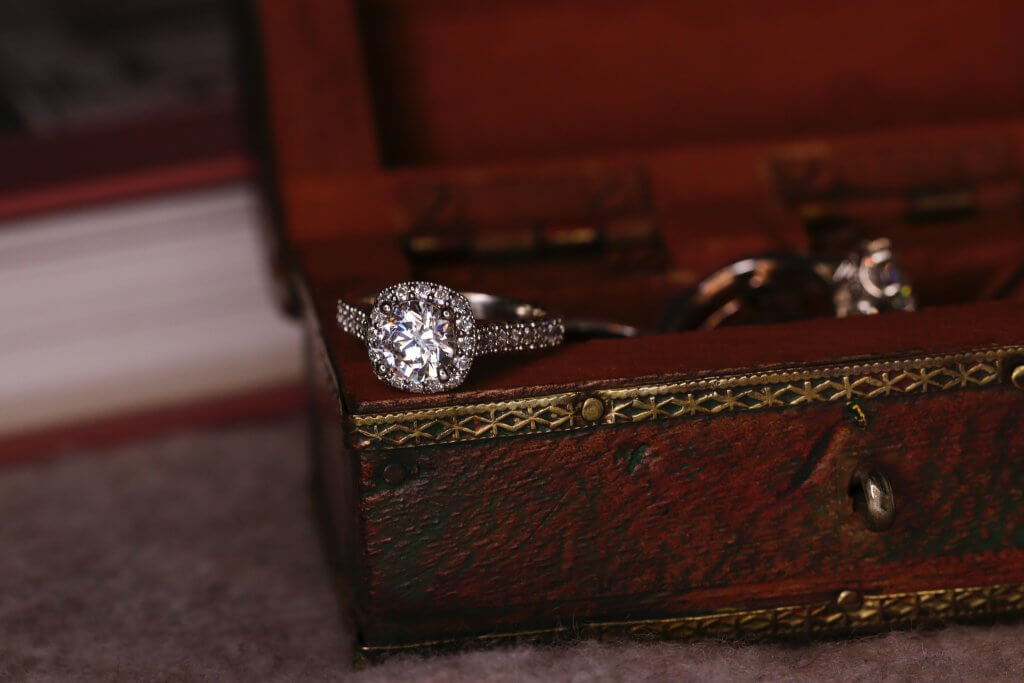
Jul 18, 2022 By Willyou.net
The Unexpected Side Of VVS Diamond Clarity Grade
